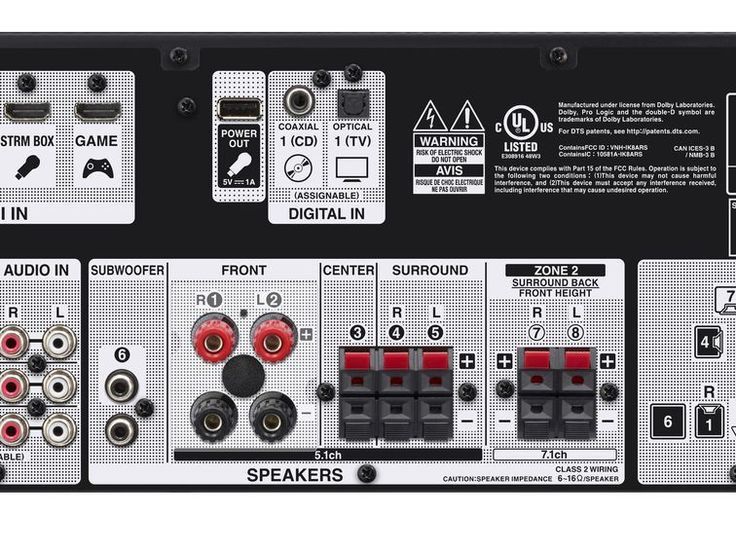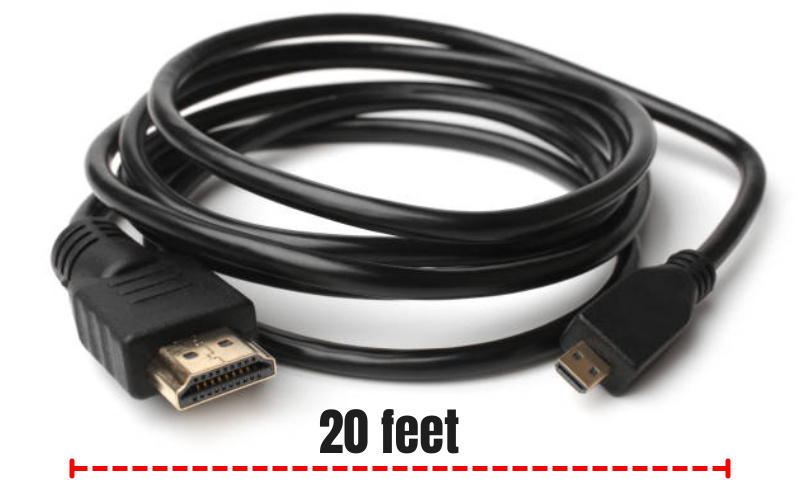Last Updated on 2 years by On Trends Gear
Some people may rack their heads while trying to figure out how to transmit TV sound to a separate set of speakers so consider choosing between HDMI ARC vs Digital Optical cable.
There may be a single sort of audio connection or a wide variety of options to choose from, depending on the TV and external speakers you have.
Maybe you’re lucky enough to have a TV with both HDMI ARC vs Digital Optical.
So, which one do you think is superior? What’s better, digital optical audio or HDMI ARC for audio
Due to the presence of both digital optical audio and HDMI ARC, it might be difficult to decide which one to use with your TV.
There are a lot of factors to think about, such as cable length, quality, available connectors, and the cables you already have on hand.
You’ve come to the correct place if you want to learn about the differences between digital optical and HDMI ARC in terms of audio quality, functionality, and compatibility.
Table of Contents
HDMI ARC and Digital Optical Cable: Basics

The functionality of HDMI ARC and optical connections are equivalent. One device can send several channels of sound to another. Up until this point, everything has been OK.
Concerning functionality, the only real distinction is that an optical connection cannot transmit video.
Since you already have a visual source in the form of an HDTV, this shouldn’t be a problem.
The architecture of HDMI and optical is fundamentally different. Copper, a common component in electrical connections, makes up the bulk of HDMI cables.
Producing copper has been a staple industry for humans for generations since it is both inexpensive and simple.
Electromagnetic interference is a weakness. Fiber optic strands, on the other hand, are formed of glass and are used to construct optical cables.
These have a high manufacturing cost. In contrast to electrical wires, they use light to carry the message.
Because of this, they are completely immune to any outside influence.
The Audio Quality
Most home theatre systems can get by with just an optical connection. They provide a maximum of 5.1 channels of surround sound.
In other words, it’s good enough for your 2.1 vs 5.1 home theatre or Soundbar. But suppose you’re an audiophile with a 7.1-channel system.
The difficulty with optical lines is that they have a limited throughput while being almost interference-proof.
Getting the most out of your expensive stereo system requires an HDMI ARC connection. When it comes to audio, HDMI ARC is nearly universally compatible.
Several audio options are available for your listening pleasure, including Dolby Atmos, Dolby Digital Plus, TrueHD, and DTS HD.
This configuration is best for cutting-edge Blu-ray playback and the newest games.
The major issue of HDMI ARC is that it can’t support 7.1-channel surround sound. For that, you’ll need a more recent update.

Thanks to HDMI eARC, you may enjoy 7.1-channel surround sound (the “e” stands for “enhanced”). In addition, it has higher data transfer rates.
Compressed audio from even the most expensive modern TVs is often of lower quality than the source material.
If your device doesn’t support HDMI ARC, the sound quality may suffer.
HDMI eARC is an Ethernet-based audio/video delivery and encoding method that preserves the original signal’s high quality.
The Video Quality
Although solely relevant to HDMI connections, video quality is still something to discuss.
The reason is, the picture quality is not uniformly maintained across all HDMI cables.
An HDMI 2.0 cable is sufficient to obtain 4K video. The maximum FPS you can achieve is 60 however.
However, a 4K resolution at 120 frames per second is achievable using an HDMI 2.1 connection.
A steady 60 frames per second may be achieved when watching an 8K video.
This is crucial to the functioning of virtually any VR system. IIt’s also possible to present a counter-argument specific to the video format.
Given that a single optical connection can’t carry both data and video, other cables must be employed.
When comparing the cost of a single high-quality HDMI ARC cable to that of an optical cable and a low-quality HDMI cable, the latter option may be preferable.
The Cable Length

Your scenario will dictate how much weight you give to cable length. This is meaningless if the TV and A/V receiver are situated close to one another.
If you have a media room or a whole-house audio system, the issue becomes much more problematic.
You should always choose the shortest cable that will do the job, so let’s get that out of the way first.
There is no way around the fact that any cable’s signal quality will decline with increasing cable length.
To that end, make sure all the speaker wires you utilize are the same length. That’s because signal integrity might be compromised by the inherent inconsistency of cable lengths.
Your audio/video receiver may have trouble pinpointing the right time if the difference is significant.
There is a maximum recommended length of 15 meters (approximately 50 ft) for an HDMI cable (about 50 feet).
The situation is complicated by two key aspects. To begin, there is the recognized interference problem. But that’s only part of the story.
Second, the 5 volts used in an HDMI transmission are too low to reliably transmit high-definition video.
Therefore, the signal can only be sent so far, even with a high-quality cable with very low resistance.
Over 15 meters, the quality of the image begins to degrade. Optical cables, depending on their quality, have a maximum length of 30 meters (about 33 to 99 feet).
Because no substance is entirely transparent, however, there is a practical limitation on how long something may be. The light signal will gradually weaken over time.
The Best Case for HDMI ARC
If you have an A/V receiver or a sound bar, then you should use HDMI ARC cables.
To put it simply, the sound quality is superior to that of an optical connection. For this reason alone, HDMI ARC is the superior option.
CEC technology is made possible by HDMI ARC as well. This is a topic that we haven’t discussed much.
All of your HDMI ARC-connected devices can be controlled with a single remote thanks to CEC.
In light of this, it is possible that a regular HDMI cable would be preferable in the absence of an external speaker system.
The Best Case for Digital Optical Cable
If you’re having problems with compatibility, optical is your best bet. An older A/V receiver or soundbar may not be compatible with HDMI ARC. So, optical could be your only option.
On the other hand, optical is the superior option over extended distances. In terms of house-wide audio system wiring, this is the way to go.
Finally, if you’re experiencing a great deal of electromagnetic interference, an optical cable is recommended.
If that’s the case, you should investigate the source of the interference on your equipment.
Bottom Line
There are uses for each of these technologies, as I hope I’ve demonstrated.
To start, if you want the highest possible quality of sound, HDMI ARC is your best option.
You may use a single remote control for several devices, and it’s compatible with the newest audio formats.
In addition, it aids in the prevention of cable chaos and jumbled wires. However, the sound quality of optical connections is still respectable.
Moreover, they can function reliably over great distances and are interference-free. Which cable is best for your needs ultimately depends on those needs.